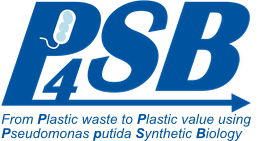Synthetic Biology combines competences and procedures of engineering sciences for analysis, design and synthesis in bio(tech)nology. This is made possible because analysis benefits from continuously improved quantitative analytical methods, design is enabled via mathematical models displaying complex processes within a cell, and this design can synthetically be realized with more and more new molecular tools.
With this colloquium we want to stimulate new possibilities of cooperation in the area of synthetic biology between engineering scientists and bio(techno)logists on site. Hence, we will inform you on the topic ‘synthetic biology’ in general and already existing activities at RWTH Aachen University and Forschungszentrum Jülich, both within research and teaching.
Our key lecturer Jay Keasling is considered one of the leading authorities in synthetic biology. His interests include new synthesis routes for drugs and biofuels, among others. As a chemical engineer by training, Jay has been honored one of the top 10 most influential biologists alive, merging biology and engineering sciences.
We cordially invite chairs and group leaders of RWTH Aachen University and Forschungszentrum Jülich to attend the colloquium and take part in an intensive exchange on possible cooperation across disciplines – according to the mission of RWTH Aachen University “from strong natural sciences to excellent engineering sciences”.


